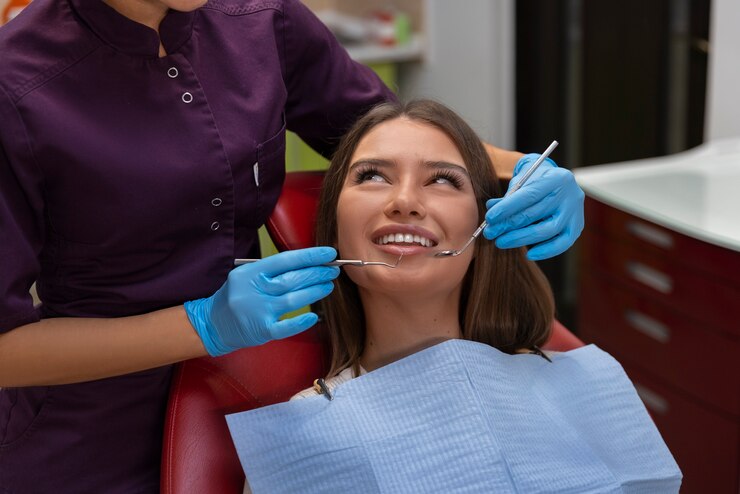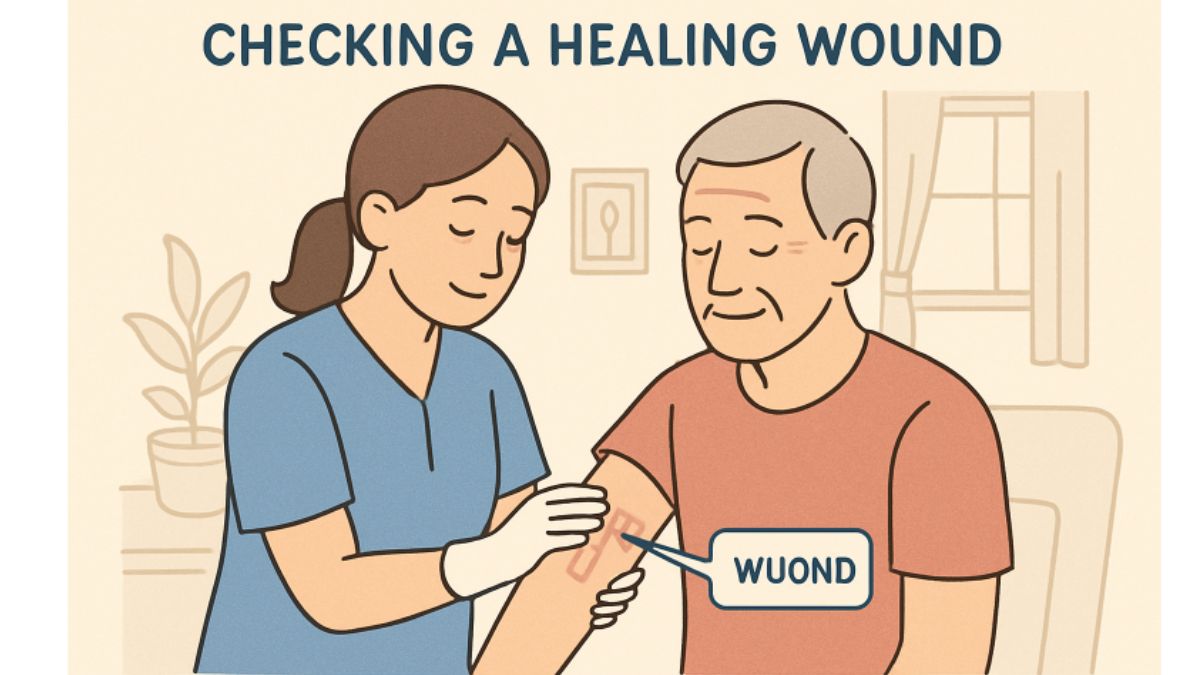HEALTH
Boosting Your Confidence With Cosmetic Dentistry

What Is Cosmetic Dentistry?
Cosmetic dentistry refers to dental procedures aimed at improving the appearance of teeth, gums, or bites. Unlike general dentistry, which focuses on oral hygiene and treating dental diseases, cosmetic dentistry emphasizes aesthetic improvements. Visiting an astoria dental office can offer various treatment options tailored to your needs. Whether you’re dealing with stained teeth, gaps, or misalignments, there’s likely a cosmetic solution designed just for you.
Popular Cosmetic Dental Procedures
Numerous procedures are available under cosmetic dentistry, each designed to address specific dental issues and deliver unique benefits. Some of the most popular options include:
- Teeth Whitening: This is one of the most common cosmetic dental procedures. It involves bleaching your teeth to make them several shades lighter. Often performed in a single dental visit, teeth whitening can dramatically enhance the brightness of your smile, making you look more youthful.
- Dental Veneers: Veneers are thin porcelain or composite resin shells that cover the front surface of teeth. They are highly effective for correcting imperfections such as discolored, chipped, or misshaped teeth.
- Dental Crowns: Also known as caps, crowns are placed over damaged teeth to restore their shape, size, strength, and appearance. They are particularly beneficial for decayed or fractured teeth.
- Dental Implants: Implants offer a permanent solution for missing teeth. They are titanium posts surgically placed into the jawbone, providing a foundation for crowns that look, feel, and function like natural teeth.
- Invisalign: Invisalign offers an alternative for those who want to straighten their teeth without the noticeable wires and brackets of traditional braces. These clear aligners are custom-made to shift your teeth gradually into the desired position.
Benefits of Cosmetic Dentistry
Cosmetic dentistry offers a myriad of benefits that go beyond just enhancing your smile. It can significantly boost your self-esteem and confidence. Research suggests that people with attractive smiles are more likely to succeed professionally and socially. Additionally, specific procedures can improve your oral health. Cosmetic dentistry can also rectify misalignments, improve bites, and reduce wear and tear on teeth. Furthermore, a well-aligned smile can facilitate better oral hygiene, as straighter teeth are easier to clean.
Choosing the Right Dentist
When choosing the right dentist for cosmetic procedures, research is crucial. Ensure the dentist has the credentials and experience in the cosmetic procedure you are considering. Look for before-and-after photos of previous patients to gauge the quality of work. Reviews and testimonials can also provide valuable insights into the quality of service. Don’t hesitate to ask for a consultation to discuss your options, understand the potential risks, and get a feel for the dentist’s approach. Building a rapport with your dentist ensures a comfortable and successful outcome.
Things to Consider Before Getting Cosmetic Dentistry
Before undergoing any cosmetic dental procedure, there are several factors to consider:
- Cost: Cosmetic dentistry can be expensive, and not all procedures are covered by insurance. It’s essential to understand the costs involved and explore any financing options that may be available.
- Durability: Some procedures, such as dental implants or crowns, offer long-term benefits, while others, like teeth whitening, may require touch-ups or replacements over time. Discuss the expected longevity of your chosen procedure with your dentist.
- Recovery Time: Some procedures, such as veneers or crowns, have minimal recovery time, while others, like dental implants, may require a significant period to heal completely.
- Potential Risks: Like any medical procedure, cosmetic dentistry has risks and potential complications. These can include infection, sensitivity, or issues with anesthesia. Ensure you are fully informed about possible side effects before proceeding.
Post-Procedure Care and Maintenance
Maintaining the results of your cosmetic dental procedures requires consistent care. Regular dental check-ups, good oral hygiene, and a healthy diet are vital. Brushing twice daily, flossing daily, and using mouthwash can help keep your teeth in good condition. Avoiding habits such as smoking or excessive consumption of staining foods and drinks can also prolong the benefits.
It provides tips on caring for different types of cosmetic work, ensuring that your investment lasts as long as possible.
Conclusion
Cosmetic dentistry can be a transformative experience, enhancing your appearance and confidence. By understanding the range of available procedures, their benefits, and the care needed, you can make informed decisions that align with your dental health and aesthetic goals. Many patients find that investing in cosmetic dentistry pays off in numerous ways, from improved self-esteem to better oral health. Consult a qualified dentist to explore the best options tailored to your needs. Your new smile can bring joy for many years with the right approach and maintenance.
HEALTH
Best Meeting Space Providers in Chennai for Small & Large Teams

Chennai, a thriving commercial and IT hub, has seen a significant rise in demand for professional meeting spaces accommodating teams of all sizes. Whether it’s a small startup hosting a client pitch or a multinational company organizing a large strategic workshop, finding reliable, well-equipped, and accessible meeting rooms is critical for seamless business operations. In 2025, the meeting space market in Chennai has matured with numerous providers catering to the diverse needs of businesses, offering flexible, tech-enabled environments without long-term lease burdens.
Leveraging platforms like GoFloaters, businesses can easily discover, compare, and book meeting room Chennai in prime locations — ensuring optimal facilities and cost-effectiveness whether for 4-person brainstorming sessions or 20+ participant corporate meetings.
Leading Meeting Space Providers in Chennai
1. Awfis
Awfis is a dominant player in Chennai’s flexible workspace market, offering premium meeting rooms that vary from compact 4-seater cabins to larger 15+ seater conference halls. Their locations span Guindy, Nungambakkam, Teynampet, and Perungudi, ensuring strategic access to tech parks, IT corridors, and business districts.
- Facilities: High-speed internet, video conferencing, whiteboards, projectors, power backup
- Prices: Starting at ₹760/hr for 4-seater rooms in Guindy, scaling up to ₹4,000/hr for large conference halls
- Ideal For: Startups, SMEs, corporate teams requiring professional settings and support services
2. Workafella
Workafella combines style with functionality, serving Chennai’s corporate clientele with upscale meeting rooms primarily in Teynampet, Nungambakkam, and Perungudi. Known for their modern ambiance and technology integration, Workafella rooms cater well for client meetings, workshops, and training.
- Facilities: Video conferencing units, ergonomic furniture, catering services on demand
- Team Size: From small team cabins (4-8 seats) up to medium-scale conference rooms (15-30 seats)
- Use Cases: Corporate presentations, product launches, board meetings
3. The Executive Zone
Situated in premium business hubs like Anna Salai and Guindy, The Executive Zone offers high-end meeting rooms suited for larger teams and high-stakes client interactions. Their rooms typically feature top-tier AV setups and dedicated event support staff.
- Key Strengths: Privacy, prestige, advanced tech infrastructure
- Capacity: 8-25 seats and customizable layouts
- Suitable For: International companies, consulting firms, finance and legal meetings
4. Regus
Regus, a global leader, provides reliable and consistent meeting spaces across multiple Chennai locations, including Mount Road and Guindy. Offering flexible hourly rental models, Regus is preferred by multinational businesses that value corporate-grade facilities with global standards.
- Features: Full tech support, video calling facilities, and professional reception
- Room Sizes: Small to large, accommodating diverse business events
- Reputation: Trusted brand with flexible booking options
Table: Meeting Room Providers Comparison in Chennai
| Provider | Locations | Price Range (₹/hour) | Room Sizes | Amenities | Ideal For |
| Awfis | Guindy, Nungambakkam, Perungudi | ₹760–₹4,000 | 4–15+ seater | Video conferencing, Wi-Fi, whiteboard | Startups, SMEs, Conference |
| Workafella | Teynampet, Nungambakkam | ₹900–₹3,500 | 4–30 seater | AV tech, ergonomic furniture, catering | Corporate meetings, workshops |
| The Executive Zone | Anna Salai, Guindy | ₹1,200–₹4,500 | 8–25 seater | Advanced AV, privacy, event staff | Large teams, VIP sessions |
| Regus | Mount Road, Guindy | ₹800–₹3,800 | 4–20 seater | Tech support, video calling, reception | MNCs, consulting firms |
Booking Meeting Rooms – Advantages of Using GoFloaters
Finding the perfect meeting space in Chennai is now simpler than ever with GoFloaters—an efficient platform offering:
- Comprehensive listings: Access to multiple providers and room options filtered by location, size, amenities, and price
- Transparent pricing: No hidden costs, hourly and daily rates clearly outlined
- Flexible booking: Book rooms instantly or reserve for future dates with easy cancellation policies
- Verified Reviews: Insights from other businesses to make informed decisions
- Added Amenities: Options for catering, parking, and tech support all available on demand
GoFloaters is especially beneficial for companies that have variable meeting needs—scaling up or down without the commitment of fixed infrastructure.
Tips for Choosing Meeting Spaces for Small and Large Teams
- Match room size to team size: Avoid overcrowding or too large a space that feels impersonal
- Prioritize tech amenities: Ensure high-speed internet, projectors, screens, and conferencing tools are functional
- Consider location convenience: Pick central or well-connected areas to enhance client satisfaction and employee convenience
- Check ambience & services: Professional interiors and support services (like reception and catering) elevate the meeting experience
- Budget and flexibility: Leverage pay-as-you-use models to optimize costs and adapt to changing business needs
Conclusion
Chennai’s dynamic business ecosystem calls for versatile meeting room solutions that cater to both small agile teams and large corporate groups. Leading providers like Awfis, Workafella, The Executive Zone, and Regus offer best-in-class facilities across prime locations, balancing technology, accessibility, and professionalism.Utilizing platforms like GoFloaters revolutionizes the booking experience, providing comprehensive options at transparent rates, and empowering businesses to secure the best meeting space for any occasion—without long-term commitments.
Whether it’s a crucial board meeting, client pitch, training workshop, or a team brainstorming session, Chennai’s top meeting space providers ensure your success with comfort, convenience, and cost efficiency.
HEALTH
Antiox Green Tea: Redefining Wellness in the Modern Age

In today’s rapidly evolving world, wellness is no longer measured solely by calorie counts or gym memberships. The most influential health trends are those that combine science, sustainability, and self-care, shaping lifestyles that thrive while uplifting communities and the planet. One such emerging staple is antiox green tea, a beverage recognized for its ability to align everyday habits with meaningful health impact.
This article explores antiox green tea’s rise in popularity, its core benefits, and why it represents the new generation of wellness solutions redefining healthy living.
What Is Antiox Green Tea?
Antiox green tea is more than just a hot drink. It’s a specially crafted green tea blend rich in antioxidants — compounds that fight free radicals, reduce oxidative stress, and support overall wellness. While traditional green tea has been consumed for centuries in Asia, the antiox green tea trend focuses on amplifying its health potential through careful sourcing, advanced processing, and awareness of sustainability.
It represents a growing movement of products that prove health benefits and environmental responsibility are not mutually exclusive but mutually reinforcing.
A Wellness Philosophy Rooted in Purpose
At the heart of the antiox green tea movement is a commitment to purposeful living. This philosophy emphasizes:
-
Holistic Nutrition: Looking beyond taste to understand how antioxidants, catechins, and polyphenols promote cellular health.
-
Sustainable Sourcing: Supporting tea farms and cooperatives that prioritize fair trade and environmentally responsible cultivation.
-
Community Well-being: Educating consumers about wellness practices while reinvesting in local and global initiatives tied to health and sustainability.
This approach reflects the growing recognition that modern wellness cannot exist in isolation — it is embedded in ecosystems, supply chains, and communities that must also thrive.
Bridging Personal Health with Global Impact
What makes antiox green tea especially noteworthy is its ability to merge individual health gains with tangible community and environmental benefits. Examples of this approach include:
-
Conscious Packaging: Using biodegradable or recyclable materials to minimize ecological footprint.
-
Local Empowerment: Partnering with smallholder farmers to ensure fair pay and skill development.
-
Innovation for Wellness: Leveraging advanced processing methods to preserve nutrient integrity and flavor profiles.
By embedding these values into production and consumption, antiox green tea illustrates how lifestyle choices can create a virtuous cycle of wellness—where healthy individuals support healthier communities, which in turn sustain the environment.
Influence in the Digital Age
As a rising wellness trend, antiox green tea benefits from the global reach of digital platforms and media influence. Social networking, wellness blogs, and influencer marketing amplify conversations around responsible consumption and holistic health.
This savvy use of digital media enables antiox green tea brands and advocates to:
-
Reach broader audiences with messages of sustainability and well-being.
-
Engage with younger generations who value transparency, authenticity, and environmental responsibility.
-
Inspire other products to integrate purpose-driven approaches into their sourcing and marketing strategies.
A Model for the Next Generation of Wellness Consumers
The rise of antiox green tea reflects broader shifts in wellness expectations, particularly among Millennials and Gen Z. Younger consumers increasingly look to products that embody:
-
Authenticity: Clear labeling, transparent sourcing, and honest health claims.
-
Diversity and inclusion: Supporting diverse growers and promoting accessibility across markets.
-
Global awareness: Recognition of interconnected challenges, from climate change to public health disparities.
By championing these principles, antiox green tea has positioned itself as both a trailblazer and a standard-bearer, guiding other health beverages toward a future where personal wellness naturally aligns with social impact.
Core Health Benefits of Antiox Green Tea
Antioxidant-rich green tea offers a wide range of potential health benefits backed by modern research:
-
Boosted Metabolism: Catechins may support fat oxidation and weight management when combined with a balanced diet.
-
Enhanced Immunity: Polyphenols and flavonoids support immune response and reduce inflammation.
-
Heart Health: Regular consumption may contribute to healthier cholesterol levels and improved circulation.
-
Mental Clarity: L-theanine, naturally present in green tea, promotes calm alertness and focus.
-
Anti-Aging Properties: Antioxidants help neutralize free radicals, which are linked to premature aging.
These benefits make antiox green tea not only a beverage but a cornerstone of modern wellness routines.
Challenges and Opportunities
Like any emerging health trend, antiox green tea faces challenges:
-
Balancing affordability with quality: Ensuring high antioxidant content without pricing out mainstream consumers.
-
Convincing skeptics: Demonstrating that benefits are evidence-based rather than hype-driven.
-
Navigating global supply chains: Maintaining ethical sourcing amid rising demand.
Yet these challenges also present opportunities for innovation. Transparent lab testing, direct trade partnerships, and creative packaging solutions allow antiox green tea brands to stand out while delivering real impact.
How to Integrate Antiox Green Tea Into Daily Life
Much like developing a healthy habit, incorporating antiox green tea into your daily routine can yield long-term benefits:
-
Morning Boost: Swap your regular coffee for a cup of antiox green tea to start your day with steady energy.
-
Midday Reset: Use it as a mindful break at work to refocus and recharge.
-
Pre-Workout Hydration: Its natural compounds may support endurance and recovery.
-
Evening Wind-down: Choose a decaffeinated version for antioxidant benefits without disrupting sleep.
This routine transforms the beverage from an occasional indulgence into a cornerstone of your wellness lifestyle.
Looking Ahead
As antiox green tea continues to expand its influence, its trajectory signals a new paradigm in health and wellness—one that values resilience, sustainability, and community alongside individual performance and vitality. In a world where consumers increasingly demand accountability and purpose, products like antiox green tea are well-positioned to set the standard.
With ongoing innovation in functional beverages, expect to see antiox green tea integrated into ready-to-drink formats, supplements, and even culinary creations—bringing its antioxidant benefits to new audiences worldwide.
Conclusion: A New Standard in Wellness
Antiox green tea endures and grows because it speaks to a universal human need: the desire for balance, health, and purpose in everyday living. It transcends fads by combining centuries-old tradition with cutting-edge sustainability and nutrition science.
In embracing antiox green tea, consumers not only choose a beverage but participate in a movement that elevates individual well-being while contributing to a healthier planet. In a world marked by rapid change and uncertainty, this antioxidant-rich tea remains a steady beacon—guiding countless people toward energy, clarity, and longevity.
HEALTH
How Trusted Wound Care Specialists Shape Better Healing Outcomes

The Steady Rise of Specialized Wound Care
As society grapples with a growing aging population and the prevalence of chronic health conditions like diabetes and heart disease, specialized wound care has never been more critical. Millions of people suffer from wounds that do not heal easily, necessitating skilled intervention. The field of wound care has transformed from a basic medical necessity to a dedicated specialty, driving significant improvements in recovery times and patient well-being. Having timely access to in-home wound care Indianapolis IN plays a defining role in these advancements, placing convenience and expertly directed care at the forefront for patients seeking optimal outcomes in the comfort of their own homes.
Trusted wound care specialists have become instrumental in nationwide healthcare networks, not only treating wounds but also empowering patients and their families with education and resources. Their work extends beyond simple bandaging—they offer a blend of clinical excellence, innovative therapies, and compassionate guidance. Reliable in-home wound care solutions allow patients to uphold their routines and independence while benefiting from expert oversight throughout their healing journey.
The Role of Expert Specialists in Patient Recovery
Recovery from complex or chronic wounds is often multifaceted, requiring a level of expertise that goes beyond standard medical care. Wound care specialists take a comprehensive approach: they not only diagnose and treat the underlying causes but also meticulously monitor the wound’s progression and adapt treatment strategies when needed. These experts adhere to the latest evidence-based protocols, ensuring all interventions align with current best practices.
According to Medical News Today, consistent involvement from wound care teams correlates with fewer complications and a higher likelihood of complete healing. Personalized treatment plans—considering factors such as the type and size of the wound, patient comorbidities, lifestyle, and goals—usher in more favorable short—and long-term outcomes. Patients and families are encouraged to participate actively in the process, fostering faster recoveries and reinforcing prevention strategies.
Modern Approaches to Wound Management
The toolkit for managing wounds has expanded dramatically in the last decade. Negative pressure wound therapy, advanced hydrogel dressings, and bioengineered skin brands offer more effective solutions than traditional bandages and topical agents. Clinical research supported by the National Institutes of Health (NIH) confirms that such innovative therapies can accelerate healing, especially for wounds that previously resisted closure.
The art of wound management lies in timing and selecting the proper intervention for each case. Thorough medical evaluations by a skilled team help ensure that care is effective and tailored to the patient’s lifestyle—whether that means adapting dressings to mobility needs or coaching on everyday habits that support recovery. Education about self-care, nutrition, and infection prevention is interwoven into every stage of treatment, empowering patients and their support systems.
The Intersection of Technology and Wound Healing
Digital transformation continues to disrupt traditional workflows in wound care for the better. Today, remote monitoring apps, digital wound imaging, and telemedicine platforms foster transparency and frequent communication between patients and their care teams. For individuals with mobility challenges, technology-powered tools reduce the need for frequent in-person visits, creating opportunities for intervention and adjustment in real time.
Artificial intelligence is increasingly woven into wound assessment and diagnosis. AI-powered image analysis automates the measurement of wound size and detects subtle changes over time, allowing for earlier detection of issues like infection or delayed healing. Industry experts highlight these tools as amplification for clinical intuition, not replacement, pushing the industry closer toward highly individualized, efficient care.
How is Success Measured in Wound Care?
Wound healing success is measured by much more than just closure rates. Top wound care providers look at comprehensive metrics, including reduction in pain, restoration of daily function, cost savings, recurrence rates, and patient-reported satisfaction. The latest clinical consensus recognizes patient-reported outcomes as vital for benchmarking progress and guiding improvements in future protocols.
Timely, transparent documentation is at the heart of these evaluation processes. Patient input is regularly integrated, and a feedback loop is used to refine the care pathway. Open communication and real-time data analysis drive the overall quality of care, supporting current patients and those whose treatment follows.
The Value of Patient-Centered Collaboration
Collaborative, multidisciplinary efforts strengthen healing. Effective wound care relies on teams including physicians, nurses, physical therapists, nutritionists, social workers, and, importantly, the patient themselves. Interdisciplinary meetings and regular review of care goals create checkpoints for progress, adapting interventions as needs evolve.
Respecting the patient’s preferences—regarding both medical decisions and cultural or personal values—contributes to better morale and compliance. Studies have shown that when patients engage fully with their teams, outcomes are superior and satisfaction levels are higher, as highlighted in recent research published by the National Library of Medicine.
Addressing Chronic and Complex Wounds
Chronic wounds such as diabetic foot ulcers, venous leg ulcers, and pressure injuries present intricate challenges that require vigilance and innovation. Successful management is underpinned by robust infection control, surgical and non-surgical interventions, and the strategic use of support surfaces or devices. Well-trained wound care specialists know how to recognize subtle shifts in a wound’s progress and prevent deterioration before it begins.
For many patients, expert guidance means relief from persistent discomfort or disability and, in some cases, preserving independence. Wound care teams leverage every tool at their disposal, providing reassurance and education along every step of the journey.
Lifelong Support and Useful Resources
The transition from wound management to proactive prevention is crucial, especially for chronic disease patients. Ongoing support enables patients to maintain healing and avoid recurrence. Digital wound tracking systems, educational seminars, peer support groups, and nurse helplines are just a few resources available for individuals and their caregivers.
Community programs and reputable online guides, such as those provided by the Centers for Disease Control and Prevention (CDC), further empower patients to take charge of their health. Staying connected, asking questions, and engaging regularly with care teams are the best defenses against future setbacks, helping individuals live as fully and independently as possible.
-

 HEALTH2 years ago
HEALTH2 years agoIntegrating Semaglutide into Your Weight Loss Plan: A Practical Guide
-

 HOME IMPROVEMENT2 years ago
HOME IMPROVEMENT2 years agoHow to Choose the Perfect Neutral Area Rug for Every Room
-

 LAW1 year ago
LAW1 year agoTeenage Drivers and Car Accidents in California: Risks and Parental Liability
-

 LAW1 year ago
LAW1 year agoPost-Divorce Considerations in California: Modifications and Long-Term Planning
-

 CONSTRUCTION1 year ago
CONSTRUCTION1 year agoConstruction Site Safety Regulations in New York and Your Rights as a Worker
-

 HOME1 year ago
HOME1 year agoSandra Orlow: The Teen Model Who Captivated the Internet
-

 FINANCE1 year ago
FINANCE1 year agoDigital Asset Management in Florida Estate Planning
-

 LAW1 year ago
LAW1 year agoKentucky’s School Football: Concussions, Injuries, and Legal Options


